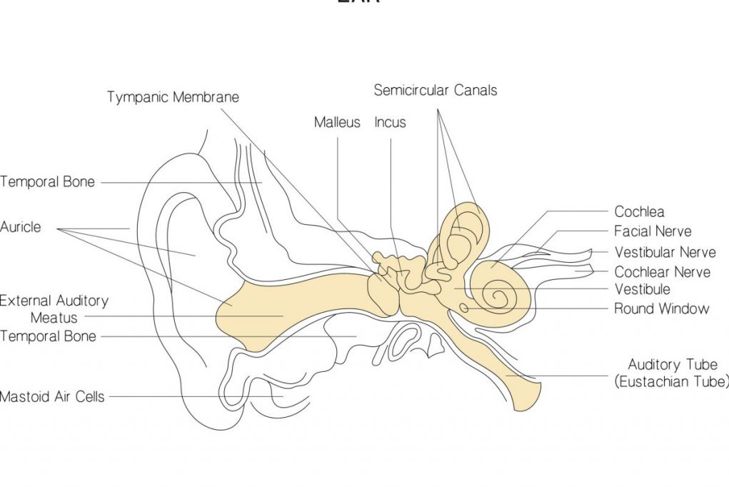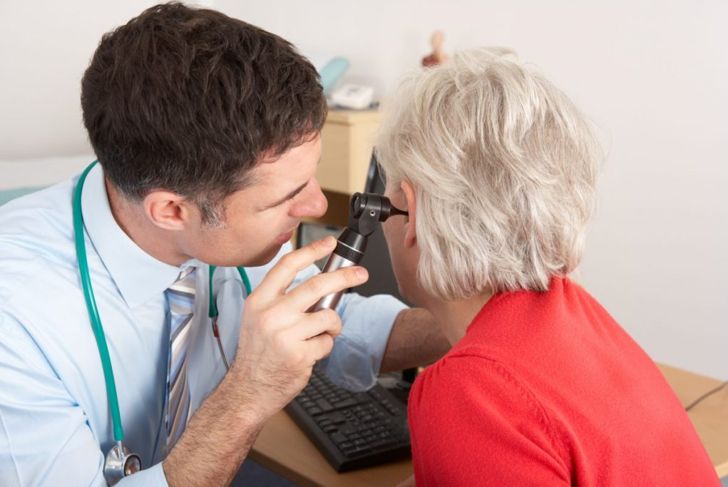Benign paroxysmal positional vertigo (BPPV) is a sensation of dizziness and disorientation. “Benign” means that though it may be unpleasant or uncomfortable, BPPV is rarely serious, except for a possible increase in the chance of falling. “Paroxysmal” means it comes on suddenly but only lasts for a short amount of time, usually less than a minute. “Positional” means certain changes in posture or movement trigger the feeling of vertigo.
Common symptoms of benign paroxysmal positional vertigo
The most common symptom of BPPV is dizziness — the feeling that the inside of a person’s head or their surroundings are spinning; essentially, vertigo. This sensation can also come with other unpleasant symptoms such as loss of balance, unsteadiness, blurred vision, lightheadedness, nausea, and vomiting. Usually, a change in head position cause these symptoms, such as tilting the head, lying down, standing up, bending over, or rolling over in bed. Some people experience the symptoms simply sitting or standing, as well.
Cause: Ear rocks
In the otolith organs, a tiny part of your ear that monitors head movements and position, there are calcium crystals called otoconia or ear rocks that help the organs understand where your head is in relation to gravity. Sometimes these crystals become dislodged from the otolith organs and move to the semicircular canals, another group of small structures with fluids and hairs, responsible for monitoring the rotation and balance of your head. If the crystals become lodged in the semicircular canals, they disrupt and confuse how the body perceives the movement of the head, which can result in vertigo.
Why do ear rocks become dislodged?
Ear rocks become dislodged and cause vertigo for a variety of reasons. Those with prior head injuries may be more susceptible to BPPV due to the possible disruption of their balance organs. People with other conditions, such as osteoporosis, diabetes, and inner ear conditions, are also more prone to developing BPPV. Even with these possible causes, idiopathic BPPV is common, meaning there is no known cause.
Diagnosis of BPPV
If someone sees a doctor with symptoms of vertigo, the physician will usually diagnose BPPV with a maneuver called a Dix-Hallpike test. The doctor will hold the persons head as they lie down quickly. As he or she reclines, the doctor will check for nystagmus, abnormal rhythmic eye movements that often accompany BPPV and will also ask if the person is experiencing a spinning sensation. This test accompanies a general physical and neurological exam. Sometimes, the medical practitioner will also run additional tests such as a CT scan or MRI of the head.
Treatment: Medication
A doctor may prescribe an assortment of medications to help relieve the feelings of vertigo. Sleep aids may improve rest by minimizing the onset of vertigo symptoms while the individual is trying to fall asleep. A doctor may also prescribe antihistamines or anticholinergics to block feelings of nausea that can come with vertigo. These medications are not always effective in treating BPPV, and they do not address the cause of the condition.
Treatment: Epley maneuver
The Epley maneuver is a common treatment for BPPV. This exercise is meant to address the cause of vertigo directly by using physical therapy to move the calcium crystals or ear rocks out of the semicircular canals. The doctor can carry out this procedure, or the patient can do it at home, and it usually takes about 15 minutes. Some people require several repetitions of the process, but once the crystals have left the semicircular canals, they should be reabsorbed by the body in a few weeks, alleviating the cause of vertigo.
Treatment: Physical therapy and precautions at home
Along with other treatments, steps can be taken at home and on a day-to-day basis to reduce BPPV symptoms and prevent them from coming back. At night, it can be helpful for a person with a history of BPPV to avoid sleeping on his or her side, and to sleep with two or more pillows under the head. It can also help to avoid bending over, standing up too quickly, or moving the head in jerky, quick motions.
Treatment: Other home remedies
Several additional remedies can help manage and treat vertigo and can be done without a doctor’s help. Activities like yoga and tai chi can reduce stress and improve balance. Anyone trying these practices must be cautious about poses that require bending forward or quick, rough movements. Some people find vitamin D and gingko biloba offer improvement of vertigo symptoms, though they should be used supplementally, in addition to other treatments.
Treatment: Surgery
In rare cases, medication, the Epley maneuver, and home remedies are not be enough to address BPPV. The most common surgery involves plugging a part of the inner ear to prevent the calcium crystals from moving back into the semicircular canal. This surgery has a relatively quick recovery time. It is common to have temporary hearing loss afterward. There is also a risk of permanent hearing loss, though it is unusual. Usually, physicians can treat cases of BPPV without surgery and these additional risks.
Outlook for people with BPPV
BPPV can be frustrating and disruptive to daily routines. Though there is no permanent cure, meaning symptoms may reappear at any time, it is possible to manage and treat BPPV over time. If symptoms continue to occur or worsen after prolonged treatment, the doctor may choose to do a more in-depth evaluation and investigate underlying or more complex causes.

 Home
Home Health
Health Diet & Nutrition
Diet & Nutrition Living Well
Living Well More
More




















